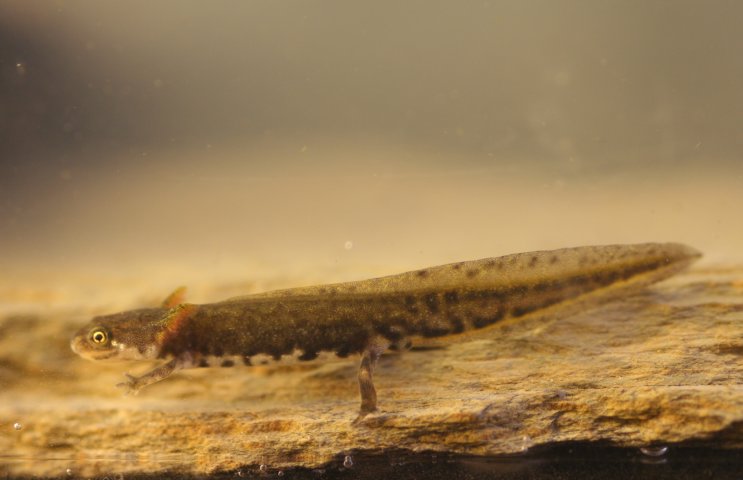 |
 |
Neotony?: |
| Author | Message |
|
Peter Senior Member Joined: 17 Jan 2008 No. of posts: 260 View other posts by Peter |
Posted: 22 Jan 2008 I was just wondering if anybody here had any instances or knowledge of neotony in British amphibians? Photos would be great. I brought up the subject as I found one colony (out of dozens) of triturus vulgaris that included individuals that were at least 3/4 grown which had external gills. The colony were in Hampshire in a man made body of water. It was 20 years ago. 
|
|
Caleb Forum Coordinator Joined: 17 Feb 2003 No. of posts: 448 View other posts by Caleb |
Posted: 24 Jan 2008 I saw quite a few neotenous smooth newts in Cambridgeshire in the late 80s/ early 90s- the vast majority being females. One I kept for a while laid fertile eggs. I've not seen any in the wild since then, though I raised a neotenous female Italian newt (T. italicus) a couple of years ago- this one metamorphosed after its first breeding season, but I did get a picture of it:  |
|
Matt Member Joined: 09 Feb 2006 No. of posts: 23 View other posts by Matt |
Posted: 24 Jan 2008 Hi Last year I did a survey in a garden pond in Basigstoke where the owner had been told that the photos he had taken of some dark looking newts were GCN. The pond was a lined pond with paving slabs around the edge constructed in such a way that the slabs overhung the edge of the pond making it almost impossible for newts to get out, though frogs seemed to be able to manage it. Netting the pond produced nothing but Smooth Newts of various sizes. Interestingly, a large proportion of the adults in the pond still retained some or all of their gills, I presume because they were unable to leave the water at all and were forced to retain their gills in order to breath. It is certainly unusual to see a male Smooth Newt in full breeding dress with gills, not a thing I had come across before. Additionally, some of the "adults", particulalrly some of the males, were noticeably smaller usual. Perhaps this could be classed a case of partial neotony ?
This is a female Smoothie from the pond with a well developed set of gills still present. Matt BRAG - Berkshire Reptile & Amphibian Group |
|
Caleb Forum Coordinator Joined: 17 Feb 2003 No. of posts: 448 View other posts by Caleb |
Posted: 24 Jan 2008 I've just found a previous thread where this was discussed. Nice photo, Matt. 'Partial neoteny' usually means retarded metamorphosis (i.e. big tadpoles)- reaching sexual maturity while retaining larval features is 'full neoteny'. It's often suggested that difficulty of escape might cause neoteny- I'm not sure how the newts would know that it's difficult to escape before they've started to lose their gills... |
|
Peter Senior Member Joined: 17 Jan 2008 No. of posts: 260 View other posts by Peter |
Posted: 25 Jan 2008 Interesting replies and great pictures. All I can add is that the man made pond in which I found the neotonic individuals had sheer sides and a concrete overhang. The majority of the colony was seemingly entirely normal. 
|
- Neotony? |